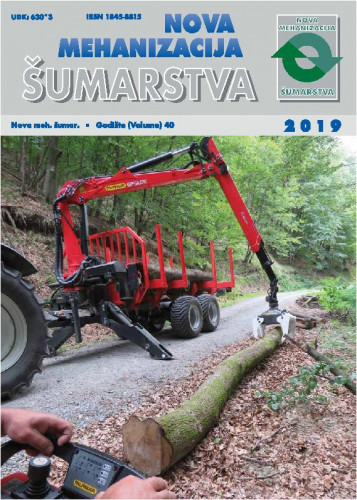U radu je provedeno istraživanje petnaest različitih šumskih kamionskih skupova za prijevoz drva u vlasništvu poduzeća Hrvatske šume d.o.o. Zagreb, Uprava šuma podružnica Bjelovar. Osnovni podaci koji su korišteni za analizu šumskih kamionskih skupova za prijevoz drva su: prijeđeni kilometri (pun, prazan), ukupna potrošnja goriva, broj dana rada (u radu, u kvaru, ispravni izvan rada), prevezeno drvo, broj tura, starost i tip vozila. Analizom podataka iskazana je potrošnja goriva prema više kriterija, stupanj iskorištenosti i tehničke ispravnosti kamionskih skupova te odnos vožnje s obzirom na relaciju pun – prazan. Na osnovi rezultata istraživanja donosi se preporuka za organizacijska rješenja kamionskoga prijevoza drva i smjernice za unapređenje i modernizaciju tehničkih rješenja na šumskim kamionskim skupovima.; The study was carried out on 15 different forest trucks with trailers (forest truck units) for timber transport owned by the company »Hrvatske šume« d.o.o. Zagreb, Forestry Administration Bjelovar. The basic data used for the analysis of forest truck units are: mileage (full, empty), total fuel consumption, number of working days (in operation, out of order, technically correct but out of operation), quantity of transported timber, number of turns, age and type of vehicles. The data analysis showed the fuel consumption according to several criteria, the utilization rate and technical validity of the forest truck units and the driving relation considering the full/empty ratio. Based on the results of the research, recommendations are made on the organizational solutions of the timber truck transport and guidelines are given for the technical improvement and modernization of forest trucks and trailers.According to the analysis of forest truck units over the one year period, vehicles up to 10 years of age meet the technical requirements. As the age of the vehicles increases, the days of malfunctioned and repaired vehicles will increase significantly.The average fuel consumption value of 54.3 L/100 km of all investigated vehicles is lower than the previous survey results, and the lower consumption of the newest forest truck units stands out. However, unit fuel consumption per volume of transported timber is higher than the results of previous research, even with the newest forest truck rallies. The reason for this may lie in the fact that older vehicles are not equipped with axle load measurement systems and are loaded with smaller timber volumes to meet legal criteria when transporting timber on public roads. Likewise, this information may indicate smaller proportions of full driving. The average percentage of full truck forest rallies of 51% is satisfactory, but better organizational solutions need to be found to increase the share of full truck rides.
Sažetak

 Nova mehanizacija šumarstva : 40(2019) / glavni urednik Mario Šporčić.
Nova mehanizacija šumarstva : 40(2019) / glavni urednik Mario Šporčić.